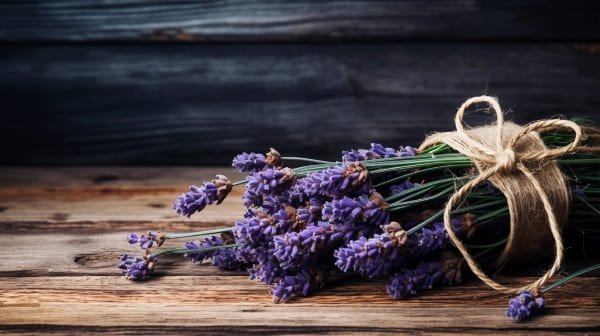Introduction
Creating floral arrangements is an art form that combines creativity, aesthetics, and the natural beauty of flowers. While fresh flowers are often the go-to choice for many, dried flowers offer a long-lasting alternative that can bring charm and elegance to any space. Among the most popular dried flowers are Statice and Lavender, both known for their enduring beauty and versatility.
Statice, with its papery blooms and vivid colors, and Lavender, with its soothing fragrance and delicate purple spikes, make a perfect pairing for a dried flower arrangement. Whether you're looking to add a rustic touch to your home decor or create a unique gift, a dried Statice and Lavender arrangement is a timeless choice.
In this comprehensive guide, we will walk you through the process of creating a stunning dried Statice and Lavender arrangement. From selecting the right materials to arranging the flowers, we'll cover everything you need to know to craft an arrangement that reflects your style and enhances your space.
Materials Needed
Before starting your arrangement, gather the following materials:
- Dried Statice Flowers: Choose colors that complement your decor. Statice is available in shades of purple, blue, pink, white, and yellow.
- Dried Lavender Stems: Ensure the lavender is fully dried and still retains its fragrance.
- Vase or Container: A rustic ceramic pot, glass vase, or even a wooden box can work well.
- Floral Foam or Styrofoam: Used to anchor the flowers in place within the container.
- Floral Wire and Tape: For securing and supporting the stems.
- Scissors or Pruning Shears: For cutting the stems to the desired length.
- Optional Decorative Elements: Consider adding dried wheat, eucalyptus, or ribbon to enhance the arrangement.
Step 1: Preparing Your Flowers
Before you begin arranging, it's important to prepare your dried flowers. Proper preparation ensures that your arrangement will look cohesive and professional.
- Inspect the Flowers: Examine the dried Statice and Lavender for any damaged or discolored blooms. Remove any that don't meet your standards.
- Trim the Stems: Use scissors or pruning shears to trim the stems to your desired length. Typically, the Statice stems should be slightly longer than the Lavender to create depth and variation in the arrangement.
- Remove Excess Leaves: If there are any remaining leaves on the stems, remove them. This allows the focus to remain on the flowers and helps the arrangement look cleaner.
- Condition the Flowers: Although your flowers are dried, you can still condition them by lightly misting them with water and allowing them to dry completely. This can help refresh the colors and prevent brittleness.
Step 2: Choosing the Right Vase or Container
The choice of vase or container is crucial in setting the tone for your arrangement. Depending on the style you want to achieve—be it rustic, modern, or vintage—the container can enhance the overall aesthetic.
- Vase Selection: For a more rustic look, consider using a ceramic or clay pot. If you're aiming for a modern style, a sleek glass vase works well. For a vintage feel, a repurposed tin or wooden box can add character.
- Size and Shape: The size of the vase should correspond to the length of your flower stems. A taller vase is ideal for longer stems, while a shorter vase works better for a compact arrangement. The shape should also complement the arrangement style—rounded containers for a fuller look, and tall, narrow vases for an elegant, vertical design.
- Floral Foam Placement: If your vase is wide or deep, place a piece of floral foam or Styrofoam at the bottom to anchor the stems. This will help the flowers stay in place and allow you to achieve the desired height and shape.
Step 3: Arranging the Flowers
Now that your flowers and container are prepared, it’s time to start arranging. This is where your creativity comes into play.
- Start with the Focal Point: Begin by placing the Lavender stems in the vase. Since Lavender has a more delicate appearance, it serves as a soft focal point for the arrangement. Position the Lavender stems in the center or slightly off-center, depending on your desired look.
- Add Statice for Contrast: Next, add the Statice stems around the Lavender. The vibrant colors and fuller blooms of Statice provide a striking contrast to the subtlety of Lavender. Arrange the Statice in a way that surrounds the Lavender without overpowering it. Alternate colors if you're using multiple shades of Statice for a more dynamic look.
- Create Layers: For a more visually interesting arrangement, create layers by varying the height of the stems. Taller Statice stems can be placed towards the back, while shorter ones go in the front. This creates depth and draws the eye through the entire arrangement.
- Fill in Gaps: Step back and assess your arrangement. If there are any gaps or areas that look sparse, fill them in with additional stems of Lavender or Statice. You can also add complementary elements like dried eucalyptus or wheat to enhance the texture and fullness.
- Secure with Floral Wire: If any stems are not staying in place, use floral wire to secure them. Wrap the wire around the stem and anchor it into the floral foam or Styrofoam. This helps maintain the shape of the arrangement and prevents any stems from shifting over time.
Step 4: Adding Decorative Elements
While the combination of Statice and Lavender is beautiful on its own, adding a few decorative elements can elevate the arrangement and give it a personalized touch.
- Incorporate Dried Wheat or Eucalyptus: Dried wheat adds a rustic, earthy feel, while eucalyptus brings in a fresh, green element. Both can be placed throughout the arrangement to add texture and variety.
- Use Ribbon or Twine: Wrap a ribbon or twine around the base of the vase for an added decorative touch. Choose a color that complements the flowers, such as lavender or cream for a soft, cohesive look.
- Add Small Ornaments: For a seasonal arrangement, consider adding small ornaments or accents. For example, pinecones or berries can be added during the winter months, or seashells for a summer-inspired design.
- Finishing Touches: Once you’re satisfied with the overall look, give the arrangement a final inspection. Adjust any stems or decorative elements as needed to ensure balance and harmony in the design.
Step 5: Displaying Your Arrangement
Your dried Statice and Lavender arrangement is now complete, and it’s time to find the perfect spot to display it.
- Choosing the Right Location: Place your arrangement in an area where it can be appreciated. It could be the centerpiece of your dining table, on a mantel, or on a shelf. Avoid placing it in direct sunlight, as prolonged exposure can cause the colors of the dried flowers to fade.
- Pairing with Other Decor: Consider pairing your arrangement with other decor items like candles, books, or framed photos to create a cohesive vignette. The natural beauty of the dried flowers complements a variety of styles, from farmhouse to modern minimalism.
- Longevity Tips: To ensure your arrangement lasts, keep it away from high-humidity areas like bathrooms, as moisture can cause the dried flowers to deteriorate. A light dusting with a soft cloth or feather duster will help keep the arrangement looking fresh.
Conclusion
Creating a dried Statice and Lavender arrangement is a rewarding project that allows you to express your creativity while enjoying the beauty of nature indoors. The combination of these two flowers offers a balance of color, texture, and fragrance that can enhance any room in your home. Whether you're making it for yourself or as a thoughtful gift, this arrangement is sure to bring joy and elegance for years to come.
By following this guide, you can craft a stunning dried flower arrangement that reflects your style and adds a touch of timeless beauty to your decor. With a little patience and attention to detail, your dried Statice and Lavender arrangement will become a cherished part of your home.




